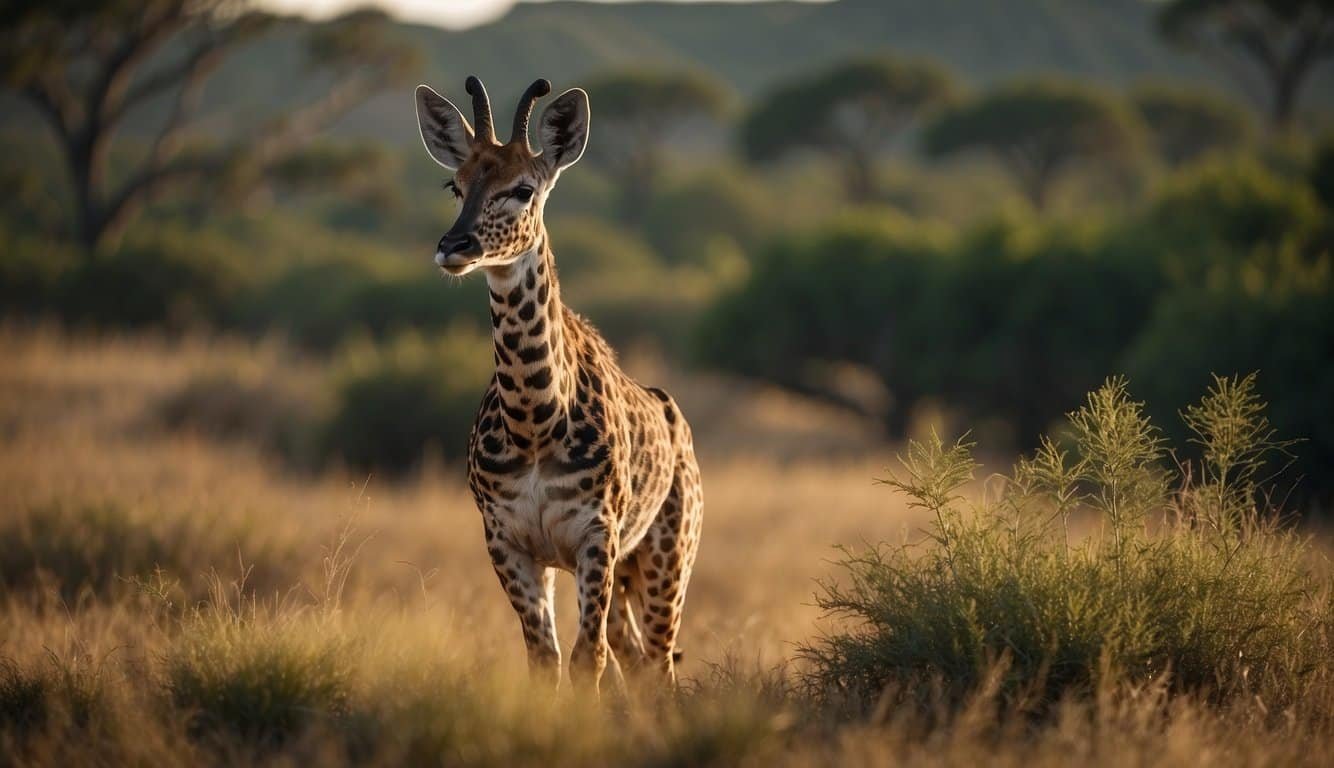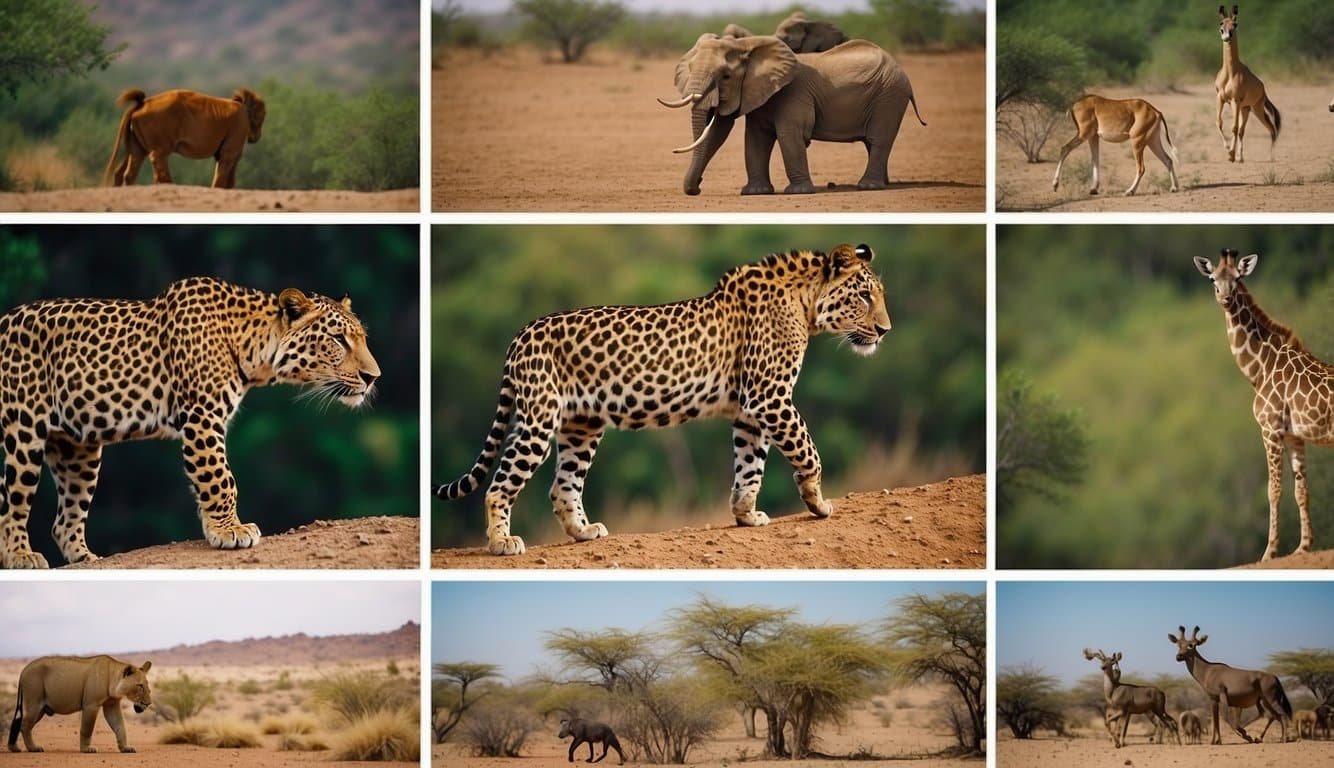Overview of Species Diversity
The diversity of life on Earth is staggering: it’s a complex web of species ranging from the smallest microbes to the largest whales. Scientists use a hierarchical system of classification which includes kingdoms, phyla, and further subdivisions to categorize this vast array of life forms.
Starting at the top, the kingdoms include well-known categories like Plants and Animals, but also Fungi, Protista (single-celled organisms with a nucleus), and more. Within the animal kingdom, creatures are further broken down into vertebrates—organisms with spinal cords, like fish, amphibians, reptiles, mammals, and birds—and invertebrates, which lack spinal cords, like insects and mollusks.
When looking at global biodiversity, one finds an eclectic mix of unique species, from vibrant coral reef fish to elusive jungle mammals. However, pinning down an exact number of species on Earth is a complex task due to the high level of uncertainty. Estimates suggest there could be anywhere from a few million to over a trillion living species, though only about 1.2 million have been properly identified.
Biodiversity is not evenly distributed: some environments, like tropical rainforests and coral reefs, are incredibly rich in species. Research is continually uncovering new species, particularly within the deep ocean and remote rainforests, adding to the current species count.
Despite the ongoing work by scientists, the vast majority of species, particularly among invertebrates, remain undiscovered, leaving the puzzle of Earth’s biodiversity an enticing mystery to be unraveled. Efforts to catalogue and protect this variety of life are critical, as it includes countless species yet to be studied and understood.
Assessment of Species Populations

Exploring the diversity of life on Earth, scientists tirelessly work to assess the countless species inhabiting our planet. This endeavor spans from the deep ocean trenches to the highest mountain peaks, with each species playing a unique role in the tapestry of life.
Existing Species and Their Classifications
The task to catalog the world’s biodiversity is monumental. Estimates suggest there are about 8.7 million species, with only a fraction formally described. Classification systems group these organisms into hierarchies like family, genus, and species, providing a framework for understanding the complexity of life. Chapman’s work, published in PLoS Biology, highlights the significance of taxonomy in this process.
Endangered Species and Conservation
Conservation efforts are crucial as many species face the threat of extinction. The IUCN Red List is a vital resource for tracking the status of animal populations, offering a glimpse into the challenges of preserving biodiversity in an ever-changing world.
Human Impact on Animal Populations
Human activities, from hunting to habitat destruction, have put wildlife at risk. Notable examples include the decline of species such as tigers and rhinos, while others like chickens, cattle, and sheep have thrived due to domestication.
Methodologies for Counting Species
Counting animals across the globe is a complex task. Researchers utilize a variety of methodologies, from DNA analysis to observational surveys. This helps to estimate population sizes and understand the dynamics of species distribution.
Importance of Microorganisms and Insects
Microorganisms, including bacteria and archaea, alongside insects like ants, constitute a massive portion of Earth’s biodiversity. The biomass of ants alone rivals that of humans, illustrating the immense scale of these often overlooked populations.
The Scale of Unidentified Species
New species are discovered regularly, suggesting a vast number of organisms remain unidentified. Taxonomy plays a pivotal role, with marine life, sponges, and arthropods constituting significant portions of these unknown realms.
Surprising Animal Population Facts
Did you know that rabbits were once rare in the wild? Animal populations can rapidly change, influenced by factors ranging from human intervention to natural phenomena.
Understanding Species Through Literature
Literature serves as a window into the lives of different species, with scientific journals and open access literature being treasure troves of information on the secret lives of the animal kingdom.
Species in Different Habitats
Diverse habitats, from urban centers to remote jungles, host a variety of species. Soil dwellers like earthworms contribute to ecosystem health as much as majestic mammals roaming national parks.
The Role of Domains and Kingdoms in Classification
Beyond species and genus, broader classifications such as domains and kingdoms bring order to biodiversity. Eukaryotes include recognizable life forms, while bacteria and archaea represent the unseen but ubiquitous domains of life.
Global Species Distribution and Abundance

Diving into the world of species distribution and abundance is an exploration of how wildlife is spread across different habitats and regions. From dense rainforests to sprawling savannas and the depths of the oceans, animals have made nearly every corner of the planet their home.
Geographical Distribution of Species
The patterns of where animals live are influenced by various factors, ranging from climate to geographical barriers, such as mountains and oceans. For instance, tropical forests are teeming with diverse species including colorful birds and countless insects, while coral reefs bustle with marine life. Different regions support vastly different ecosystems, each a world unto itself, where the variety and numbers of animals can be drastically different.
The Most Populous Animal Species
When talking about populous species, insects like ants take center stage with estimated populations in the quadrillions. But it’s not just insects; mammals such as cattle, sheep, and chickens have large populations due to their role in human agriculture. In terms of sheer numbers, these domestic animals dominate the charts, alongside their wild counterparts in various ecosystems.
Patterns of Species Richness
Species richness, meaning the number of different species in a given area, varies greatly around the globe. Biodiversity hotspots, like the Amazon rainforest and the coral-rich oceans of the Indo-Pacific, are packed with a multitude of species, including many that are found nowhere else on Earth. Migration and movement patterns also play a crucial role in the changing dynamics of these rich habitats.
Oceanic versus Terrestrial Species
The balance between marine and land animals is a curious aspect of global biodiversity. Oceans cover more than 70% of Earth’s surface and are home to an array of species from microscopic plankton to the blue whale, the largest animal to have ever existed. On land, animals have evolved in countless forms, exploiting every possible niche in habitats as varied as the sands of the Sahara to the peaks of the Himalayas.
Regional Differences in Species Abundance
Regional differences in species abundance tell a story of adaptation and survival. Endemic species thrive in isolated regions like islands, having adapted to very specific environments. In contrast, invasive species, often introduced by human activity, can disrupt local populations. From the jungles where parrots flaunt their vibrant feathers to the grasslands where mammals like zebras and elephants roam, each region holds its own unique assembly of animal life.
By exploring these habitats and understanding the factors that affect species distribution and abundance, one gains an appreciation for the complexity and interconnectedness of our world’s ecosystems.

